Key takeaways:
- Dialogue serves as a powerful tool to reveal character traits, emotions, and to enhance pacing in storytelling.
- Effective dialogue techniques include using authentic speech patterns, subtext, and distinct character voices to create relatable and engaging conversations.
- The emotional state and background of characters significantly influence their dialogue, making it essential to maintain consistency in voice throughout the narrative.
- Personal experiences can enrich dialogue, adding authenticity and fostering connections between characters and readers.
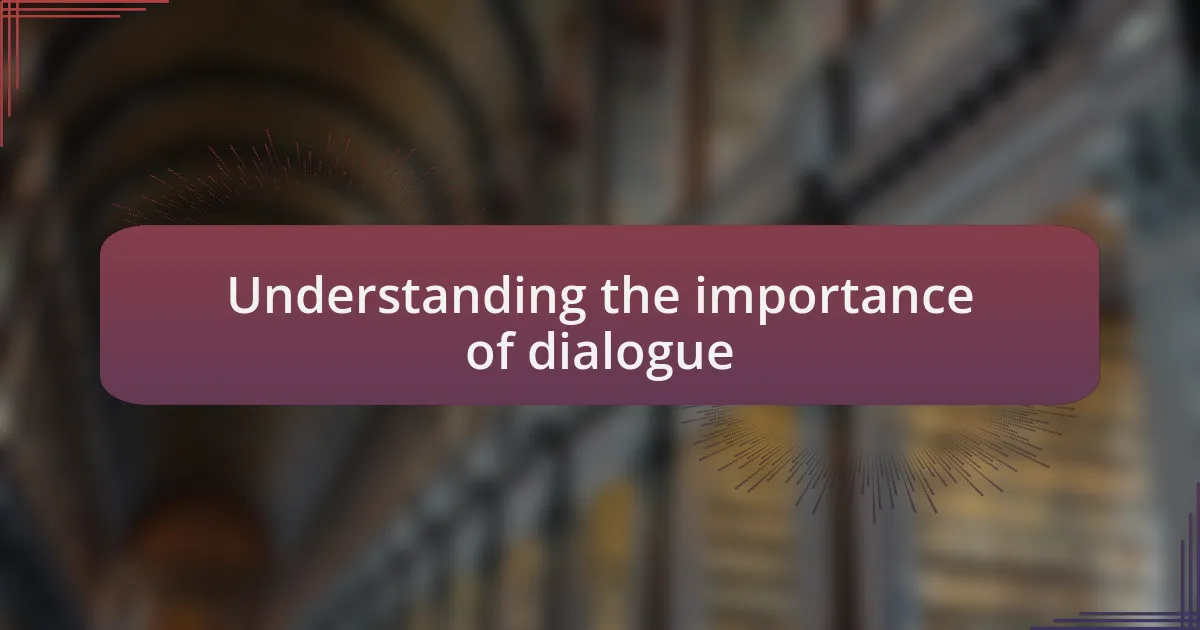
Understanding the importance of dialogue
Dialogue is a powerful tool in storytelling; it breathes life into characters and pulls readers into their world. I remember the first time I read a book where the dialogue was so natural that I could almost hear the characters speaking. It made me realize that what’s said—and how it’s said—can evoke emotions and create vivid imagery in the reader’s mind.
When I crafted my own dialogue, I discovered that it serves not just as a means of communication but also as a way to reveal character traits and motivations. Have you ever noticed how a character’s words can reflect their inner struggles? For instance, in one of my stories, a seemingly simple exchange about a cup of coffee unfolded layers of tension and conflict between two characters. It was astonishing to see how much depth a few lines could add to their relationship.
Moreover, dialogue often acts as a pacing mechanism. It breaks up dense narrative and keeps the reader engaged. Once, I found myself editing a lengthy section of exposition, and I replaced parts of it with dialogue. What surprised me was how much more dynamic the scene became. It was a reminder that dialogue doesn’t just convey information; it makes the reading experience more enjoyable and relatable. In what ways do you think dialogue could enhance your storytelling?
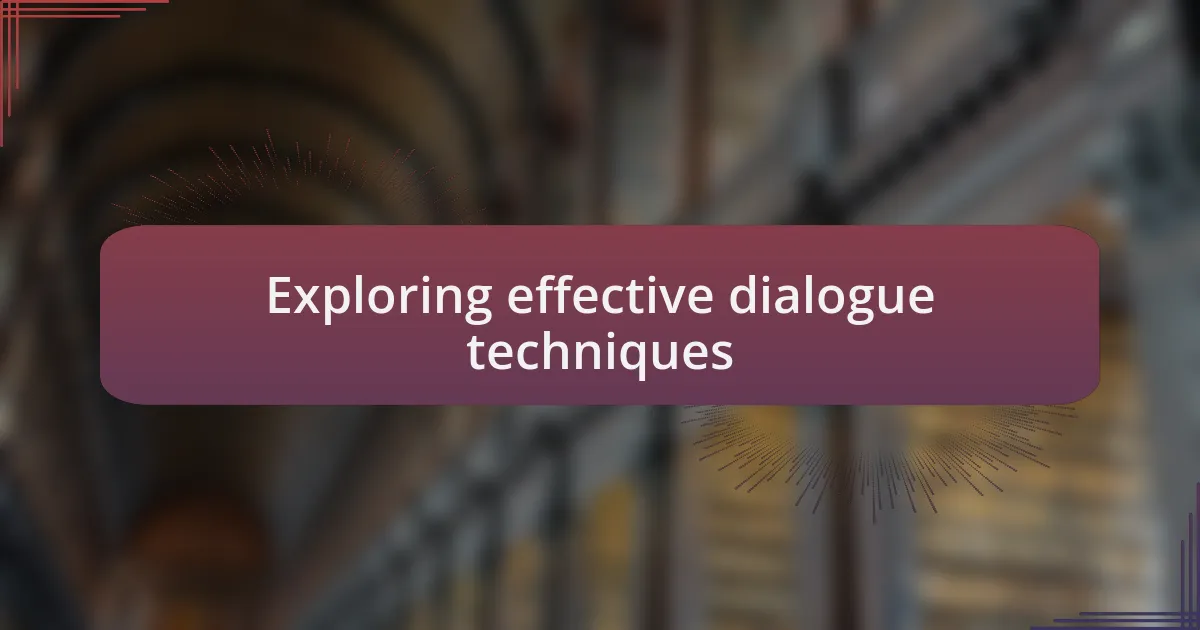
Exploring effective dialogue techniques
Effective dialogue techniques hinge on authentic speech patterns that mirror real-life conversations. I remember rewriting a dialogue scene where I focused on using interruptions and overlaps—elements often present in everyday talk. It was eye-opening to see how much energy these techniques brought to the exchanges, making them feel spontaneous and genuine. Have you tried incorporating the rhythm of real conversation into your writing? It can be a real game changer.
Another crucial technique is to allow subtext to work its magic. What characters don’t say can be just as powerful as the words they choose. I once penned a dialogue-rich confrontation between two siblings where the tension simmered beneath their seemingly casual words. It was intriguing to measure the weight of silence against spoken language, transforming a routine discussion into a dramatic revelation. Have you explored how what’s left unsaid can shape your dialogue?
Finally, consider the role of distinct character voices. In my early writings, I often found characters sounding too similar, which diluted their identities. It took experimenting with vocabulary, speech patterns, and even sentence structure to craft unique voices. When I finally hit the mark, it felt like the characters leaped off the page, each with their individuality intact. How do you ensure your characters maintain their unique voices throughout your dialogue?

Analyzing character voice and tone
When analyzing character voice and tone, I often reflect on how the background and experiences of each character shape their dialogue. For instance, I once wrote a conversation between a seasoned detective and a rookie cop, paying close attention to how the detective’s formal language contrasted with the rookie’s casual slang. This difference in tone not only highlighted their generational gap but also added layers to their relationship. Have you considered how a character’s life history can directly influence their manner of speaking?
I’ve learned that the emotional state of a character should heavily influence their voice. During a recent project, I crafted a scene where a character grapples with grief, and I made their dialogue sparse and fragmented, mirroring their inner turmoil. This choice not only made the character’s vulnerability palpable but also resonated with readers who could relate to that feeling of being lost for words. How do you reflect a character’s emotions through their dialogue choices?
Another vital aspect of voice and tone is the consistency throughout the story. I remember revising a character whose voice became inconsistent as the narrative progressed; I had initially given them quirky expressions that later vanished. Returning to those original speech quirks not only restored their identity but enriched the overall narrative. Have you experienced the challenge of maintaining a character’s voice from start to finish?
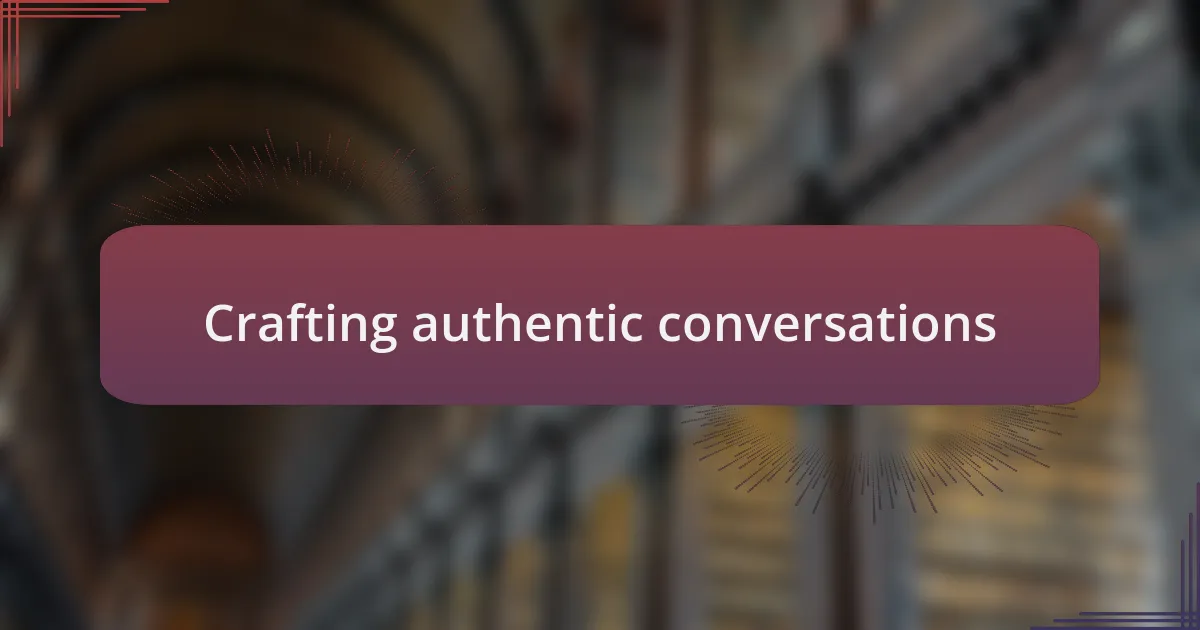
Crafting authentic conversations
Crafting authentic conversations begins with a deep understanding of the characters involved. I recall a time when I worked on a dialogue between two childhood friends who had grown apart. To capture their genuine interactions, I drew on my own experiences of reconnecting with old friends after years apart, emphasizing their tentative yet nostalgic exchanges. This approach allowed me to infuse their conversations with warmth and realism; have you ever had a chat that brought back memories you thought were long gone?
Another crucial element is the use of subtext, where what isn’t said can be just as impactful as the spoken words. I once wrote a heated argument between a couple, focusing on the tensions simmering beneath their surface dialogue. Instead of having them outright state their feelings, I leveraged pauses and interruptions, allowing readers to feel the frustration and love intertwined in their exchanges. How do you convey the complexities of relationships through the unspoken nuances of dialogue?
Lastly, regional vernacular and slang can be powerful tools in crafting authentic conversations. I vividly remember writing a scene set in a small town where my characters spoke in a dialect influenced by local culture. By incorporating specific phrases and expressions, I transported readers to that community, making the dialogue not only relatable but also immersive. Do you think regional influences on language enhance character authenticity in your writing?
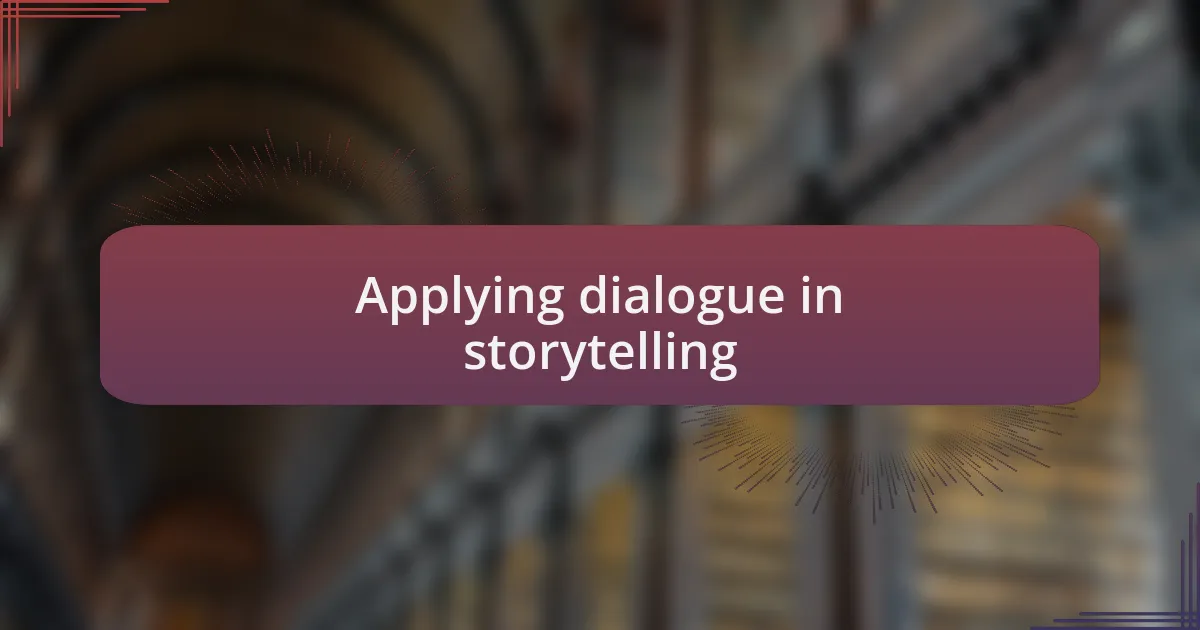
Applying dialogue in storytelling
Applying dialogue in storytelling can breathe life into narratives in ways that narration alone cannot. For instance, while developing a conversation between a mentor and a mentee, I drew inspiration from my own experiences of guidance and learning. The exchange became a blend of encouragement and vulnerability, showcasing how mentorship can shape personal journeys. Have you ever felt the transformative power of a few well-chosen words?
In addition to capturing emotional depth, dialogue offers insight into character motivations and backgrounds. I once crafted a tense scene between a newcomer and the town’s locals, revealing prejudices and long-held beliefs through their interactions. By allowing characters to discuss their differences openly, I explored how misunderstanding can both ignite conflict and foster growth. Can the words characters choose set the stage for their ultimate fate within the story?
Furthermore, the rhythm of dialogue can affect pacing and tension. During my latest project, I experimented with rapid exchanges between characters during a crisis, making the urgency palpable. The brief sentences and overlapping speech mimicked the chaos, drawing readers into the scene. I’ve learned that the manner in which dialogue flows can often mirror the emotional stakes involved. How do you think pacing through dialogue can change a reader’s experience?
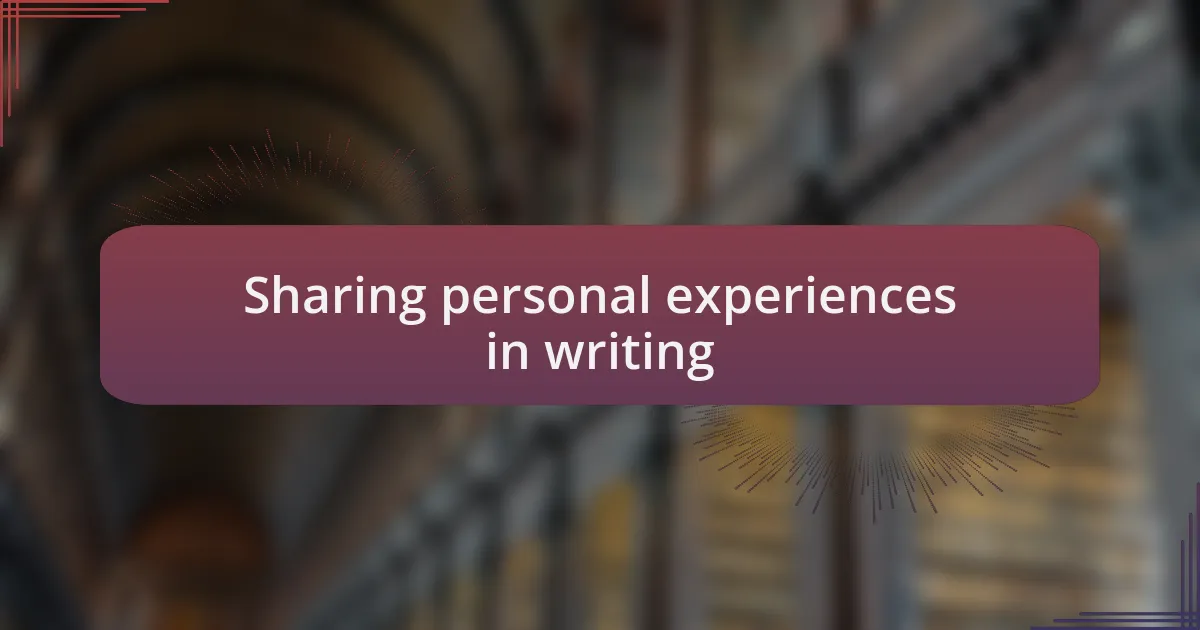
Sharing personal experiences in writing
Crafting dialogue in my writing has often been a deeply personal undertaking. I remember a short story where I channeled my own struggles with self-doubt into a conversation between two friends. One friend’s words of reassurance reflected my own desires for support during tough times, and this not only enhanced the emotional authenticity of the characters but also allowed me to reflect on my experiences of friendship and understanding. Have you ever found comfort in the words of others during your own moments of vulnerability?
There are moments when the act of writing dialogue can feel like reliving experiences. In one project, I wrote a heated argument between siblings that mirrored a real-life disagreement I had with my brother. It surprised me how cathartic it was to navigate those emotions through my characters, transforming a painful memory into something constructive. This exercise not only helped me process my feelings but also enriched the narrative, proving how personal experiences can elevate the stakes in storytelling.
Sometimes, I find that sharing personal experiences in dialogue can lead to unexpected connections with readers. I penned a scene where a couple reminisces about their first date, weaving in details from my own romantic history. That relatable exchange prompted readers to share their own stories, creating a bridge between my fictional world and their real ones. Isn’t it fascinating how a few heartfelt lines can resonate so deeply with others, sparking a dialogue beyond the pages?